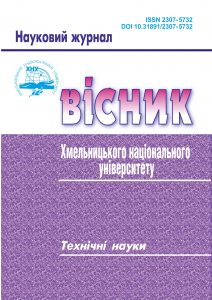MATHEMATICAL MODEL OF GROUP CONTROL OF UAVS BASED ON RELATIVE STATE SPACE METHOD
DOI:
https://doi.org/10.31891/2307-5732-2023-327-5-7-13Keywords:
group control, unmanned aerial vehicles, hierarchical approach, parameter adaptation, multi-agent systems, nonlinear dynamics models, mathematical flight simulationAbstract
The control of groups of unmanned aerial vehicles (UAVs) based on the relative state space method and coordinated control is studied. One of the main problems in the study of a set of systems is the coordination of actions between autonomous agents to achieve common goals and fulfill a mission. To develop a mathematical model, the use of the relative state space method is proposed, which allows agents to determine their position and orientation relative to other agents in the system. This makes it possible to effectively coordinate and coordinate their actions to avoid collisions, which is a critical point in UAV group application scenarios with strict requirements for accuracy and reliability of mission performance. One of the central aspects of the review is the use of a hierarchical management system. Each UAV is equipped with a standard autopilot that provides accurate tracking of incoming guidance signals. This allows you to implement strategies of straight-line movement on a given trajectory and control the device to perform a flight task with the necessary accuracy and reliability. The efficiency index of the proposed approach was confirmed during experiments using full nonlinear models of flight dynamics of "Zagi UAV" devices, which were equipped with autopilots. The application of this control method made it possible to achieve successful performance of group flight tasks from the point of view of route planning and flight safety in terms of navigation. The paper analyzes the process of building a group and maintaining a given geometric shape for four UAVs. Initially, the geometric shape is represented by a straight line, but thanks to the use of the proposed method, the necessary geometric configuration is achieved. It is shown that with the help of the proposed control method, an additional possibility of dynamic adjustment of trajectories during the flight to adapt to changes in external conditions appears. The research results show a high level of efficiency and reliability of the proposed management method in conditions of dynamic changes and limitations.

